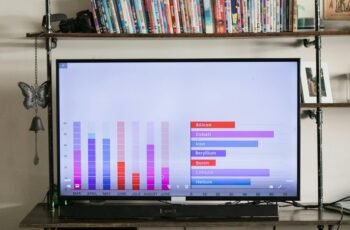When you stack four 100 Ah LiFePO4 cells for a 12.8 V camper build, a BMS isn’t optional—it’s your watchdog against overcharge, deep discharge, and cell drift. You’ll choose current ratings, decide on Bluetooth, and plan balance leads before a single bolt tightens. Then comes wiring order, fuse placement, and first‑power checks that prevent costly mistakes. You can set safe limits and extend cycle life—but only if you avoid one common misstep that many DIYers overlook.
Why a BMS Is Essential for LiFePO4 Packs
Even if your cells are matched and new, a LiFePO4 pack can drift out of balance and fail without a Battery Management System. You need a BMS to constantly watch cell voltages, temperatures, and current so nothing strays past safe limits. That’s the heart of BMS functionality: it measures, decides, and acts in real time.
A good BMS balances cells at the top of charge, preventing one cell from overcharging while others lag. It also enforces battery protection by cutting charge or load when voltage, current, or temperature hits defined thresholds. That safeguards cycle life and preserves capacity. Without it, you risk thermal stress, lithium plating, and sudden shutdowns. Use a BMS to make your DIY pack reliable, safe, and consistent.
Choosing the Right BMS: Types, Ratings, and Features
You’ll start by comparing BMS types—basic protection boards, smart Bluetooth units, and active vs. passive balancers—to match your build and monitoring needs. Next, check key ratings: cell count (S), continuous and peak current, voltage limits, balance current, and temperature sensor support. Finally, weigh features like low-temp charge cut-off, Bluetooth/app data, contactor or relay control, wiring ease, and firmware support.
BMS Types Overview
While the cells define your pack’s capacity and voltage, the BMS determines how safely and reliably it runs. You’ll pick among BMS technologies that balance simplicity, monitoring depth, and integration level. Standalone (dumb) BMS units provide basic protection; smart BMS add data, logs, and configurability; distributed and modular designs scale for larger packs; integrated BMS embed into inverters or chargers. Weigh wiring complexity, configurability, and maintenance. Core BMS benefits include cell protection, longevity, and consistent performance.
| Type | When you’d choose it |
|---|---|
| Standalone “dumb” | Budget builds needing basic cutoff and cell balance |
| Smart/communicating | You want data, remote visibility, and tuning |
| Distributed/modular | Larger series strings or serviceable subpacks |
| Integrated/combined | Tight space or all-in-one system approach |
Pick the architecture that matches your build size, monitoring needs, and service goals.
Key Ratings and Features
Before you buy a BMS, lock in the essentials that must match your pack and use case. Confirm cell count compatibility (e.g., 4S, 8S), nominal chemistry (LiFePO4), and voltage limits. Size continuous and peak discharge current to your inverter or motor draw, with headroom for startup surges. Check charge current rating to match your charger.
Scrutinize BMS specifications for balancing method and rate; active balancing improves pack health in larger systems. Verify protection thresholds: over/under-voltage, overcurrent, short-circuit, and temperature cutoffs with accurate NTC support. Evaluate BMS performance features like low quiescent draw for storage, MOSFET or contactor robustness, and thermal derating behavior. Look for communication (UART/CAN/Bluetooth), data logging, user-tunable parameters, and firmware support. Confirm wiring harness quality, enclosure rating, and clear documentation.
Tools, Materials, and Safety Prep
Although the wiring comes later, start by gathering the right tools, materials, and safety gear so the BMS install goes smoothly and safely. Lay out essential tools: insulated screwdrivers, nut drivers, torque wrench, wire stripper/crimper with the correct die, heat gun, multimeter, and label maker. Add precision cutters, tweezers, and zip ties for neat routing. Choose quality materials: tinned copper wire sized to pack current, ring terminals with heat-shrink, adhesive-lined heat-shrink tubing, fiberglass or PET loom, and high-temp double-sided tape for the BMS.
Prioritize safety equipment: Class 0 insulated gloves, safety glasses, face shield for high-current packs, and a cotton long-sleeve. Keep an ABC fire extinguisher and a metal tray for work. Isolate the pack: remove chargers, discharge to a safe level, and cover exposed terminals with Kapton or PVC tape.
Wiring the BMS: Step-by-Step Connections
You’ll start by mapping the balance lead sequence from B- to the highest cell, confirming each tap lands on the correct cell terminal. Then you’ll secure the main leads: B- to pack negative, P- to system negative, and C- to charger negative if your BMS splits charge/discharge. As you connect, verify polarity and continuity at each step to prevent shorts and misreads.
Balance Lead Sequence
Start by mapping the balance leads in exact cell order, because your BMS expects a strict sequence from the most negative point to the most positive. Label the pack negative as B- (or B0), then tag each cell junction upward: C1+, C2+, and so on. Precise balance lead placement enables accurate voltage monitoring and prevents misreads that can trigger faults or damage cells.
Connect the first thin wire to B- only if your harness requires it; otherwise begin at C1+. Proceed one junction at a time, confirming polarity before each crimp or weld. Never skip a tap or cross wires. After landing all taps, verify with a multimeter at the BMS plug.
| Tap Lead | Expected Order |
|---|---|
| B- / B0 | 0 |
| C1+ | 1 |
| C2+ | 2 |
| C3+ | 3 |
Main Lead Connections
With the balance leads confirmed and the plug verified, move to the high‑current paths that actually carry pack power. Start by mapping the BMS P‑, B‑, and C‑ (if present). Your main lead connections route through the BMS so it can protect and measure current. Keep conductors short, sized for peak amps, and crimped or soldered to spec.
- Connect B‑ to the pack’s negative battery terminal connections; torque properly and add a star washer for bite.
- Route the pack positive directly to the load/charger positive; the BMS doesn’t interrupt the positive.
- Run P‑ from the BMS to your system negative bus; this is the switched return path.
- If separate, wire C‑ to the charger negative, enabling charge‑only cutoff and accurate current sensing.
Confirm polarity, then meter continuity before energizing.
Initial Configuration: Voltage, Current, and Balancing Settings
Two parameters define a safe first power‑up: conservative voltage limits and modest current caps, followed by enabling cell balancing. During initial setup, open your BMS app and load the configuration parameters before connecting loads. Set pack high‑voltage cutoff near 3.55–3.60 V per cell and low‑voltage cutoff around 2.8–3.0 V per cell. Keep charge current at or below 0.3C and discharge current similarly modest; set short‑burst limits slightly higher with reasonable delays.
Enable passive balancing with a start threshold near 3.40 V and a balance delta of about 10–20 mV. Allow balancing both at rest and during charge if your BMS supports it. Calibrate pack and cell voltage readings, verify temperature sensor mapping, and apply conservative temp cutoffs for charge and discharge.
Testing, Troubleshooting, and Maintenance Practices
Once the BMS is configured, verify the basics under no‑load conditions before you push current. Confirm pack voltage, cell balance, temperature sensors, and BMS communication. Then apply a small load and watch protection thresholds trip as expected. Log data so you can compare later runs and refine your battery diagnostics.
- Measure each cell’s voltage drift over time; drift flags weak cells or wiring faults.
- Check charge/discharge cutoff events under controlled loads; validate current sensing and MOSFET behavior.
- Inspect connectors, busbars, and thermistors; torque, clean, and re‑route if you detect heat or noise.
- Update firmware and back up BMS configs; document settings with timestamps.
When issues arise, isolate: bypass loads, swap sensors, and test one variable at a time. Create a quarterly maintenance schedule and stick to it.
Conclusion
You’ve now got the roadmap to add a BMS to your DIY LiFePO4 pack—safely, smartly, and confidently. Choose the right unit, wire it cleanly, dial in settings, and test like a pro. With routine checks, your cells will hum in harmony and your system will run cool and reliable. Treat the BMS like your pack’s guardian angel, and you’ll protect your investment while enjoying dependable power for years. Now, button it up and power on.

